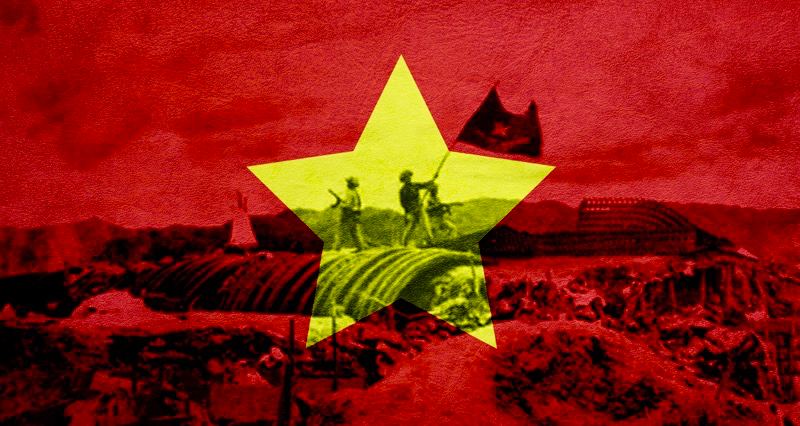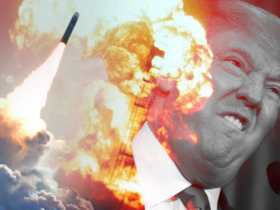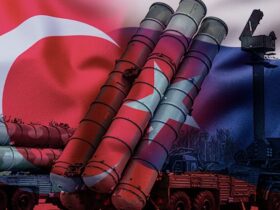May 7 commemorates the seventieth anniversary of the victory of the Vietnamese people in the battle of Dien Bien Phu, which ended French colonial power throughout the Indochinese peninsula. This battle, together with the Algerian war of independence concluded in 1962 and the battle of Cuito Cuanavale that ended in November 1988 due to the joint action of the Cuban-Angolan forces in the south of this country, meant the most resounding defeats inflicted on the European colonial power in the second half of the 20th century.
In December 1953, President Ho Chi Minh sent a message to the cadres and combatants of the Dien Bien Phu Front. He told them that they had the mission to march towards that place where a strong French contingent was located, which they had to annihilate in order to expand the resistance and free the compatriots who still suffered from the yoke of the enemy.
In his letter, President Ho recalled the great successes and brilliant victories of that Front. After political education and military training campaigns, they had made new progress. In this situation, they had to fight with greater courage and despite the difficulties, they had to impose their unwavering conviction in victory.
Dien Bien Phu is a town located in the Muong Valley Thanh in the middle of a mountainous area in the northwest of Vietnam, about 320 km from Hanoi. It is the capital of the province of Dien Bien and is located about 35 km from the border with Laos. The Muong Thanh Valley is surrounded by a region of jungles, rice fields and lakes.
Two months before President Ho’s letter to the combatants, in October, General Vo Nguyen Giap was summoned to the High Command Headquarters where President Ho resided, to discuss the military plan for the 1953-54 winter-spring campaign. The headquarters was located in the village of Khuoi Tat in the Thai Nguyen province in the northeast of the country. In addition to President Ho, Truong Chinh and Pham Van Dong both members of the Political Bureau of the Communist Party of Vietnam (CPV) and General Hoang Van Thai also attended the meeting. In January, General Giap was appointed commander-in-chief of the Dien Bien Phu Front, while General Hoang Van Thai was appointed chief of staff of that Front.
Since May, the French occupation army had a new leader: General Henri Navarre, who was characterized by his intense activity and unlimited brutality against the civilian population. His plan was to concentrate a huge, unprecedented mobile force in Vietnam that added to his proposal to pacify the south of the country, avoiding a confrontation in the northern region, bordering China. The French planned to remain on the offensive, delivering blows to the rear in order to immobilize and wear down the People’s Army of Vietnam. The Navarre Plan, prepared and financed jointly with the US Pentagon, had the objective of annihilating the main Vietnamese military contingent in 18 months and transforming the country into a colony and military base for France and the United States.
At the October meeting, President Ho calmly said that the enemy had concentrated in order to reinforce itself, so it had to be forced to disperse and reduce its force. For this purpose, the Central Committee of the Communist Party of Vietnam issued a directive. In order to maintain and develop the initiative, a part of the regular forces would be used, in coordination with the regional troops, to attack the strategic points that were considered to be the enemy’s greatest weakness, forcing it to disperse to defend itself. In this way, a new situation would be created, in which the dislocation of the French army would have to be constantly observed so that, once the opportunity arose, it could concentrate the troops, eliminate the most important forces of the enemy and change the course of the war.
Likewise, provisions were issued to intensify the guerrilla war, defend the liberated areas with local troops and strengthen coordination with the revolutionary forces of Laos and Cambodia.
In compliance with this resolution, in December 1953, the Vietnamese army took the initiative, liberating important areas of the northwest of the country, at the same time that other areas in southern and central Laos and northwest Cambodia were also liberated, achieving the objective of dispersing the enemy’s forces and forcing him to recompose his plan by preventing him from carrying out operations in some territories where he had prepared them, being forced to withdraw troops from the south to reinforce the north, preventing his plan to concentrate forces. All of this created the conditions for their annihilation, as they had to abandon positions, outposts and air bases that resulted in heavy losses for the colonial power.
As General Giap said in his memoirs: “…the French were never able to resolve the concentration-dispersion contradiction in their forces.” The Vietnamese offensive aimed at deepening this contradiction. It was manifested by the fact that the French army needed to disperse to occupy all the disputed territory, but, “when it dispersed, it found itself in difficulties. Their dispersed units became easy prey for our troops, their mobile forces were continually reduced and the shortage of troops became more marked…”
In this situation and with the aim of maintaining a good position in the northwest, the French, with the support of the United States, undertook the task of extremely quickly building and reinforcing a gigantic military base in Dien Bien Phu located in a strategic area. They concentrated a good number of forces and means to convert it into the fortified area that was to become a bastion for the application of the Navarre Plan, extending and prolonging the war.
In this context, the Political Bureau of the CPV decided to defeat and annihilate the enemy in Dien Bien Phu, for which it established a series of measures aimed at victory. Multisectoral support to the army was imposed as the main task, for which thousands of volunteers, local, regional troops and regulars joined forces to overcome the technical and weapons supremacy of the colonial army. Thus, hundreds of kilometers of rural roads were opened in the middle of the jungle and mountains, transporting the weapons, ammunition and logistical supplies necessary for the eventual battle along almost inaccessible routes.
On May 7, after 55 days of fierce fighting, the Vietnamese army was able to destroy the entire Dien Bien Phu fortification system, annihilating or capturing up to 16,000 enemy troops including all their officers. In general, during the entire campaign, 112 thousand enemy soldiers were liquidated, liberating relevant strategic areas and recovering three-quarters of the country while similar successes were obtained in Laos and Cambodia.
Faced with defeat and the possibility of total disappearance, the French withdrew south of the 18th parallel. The victory of Dien Bien Phu meant the liberation of the entire north of the country, creating conditions for its subsequent reunification that would wait 19 more years of fight – now against the United States that created a puppet government in the south.
In July 1954, the Geneva Accords were signed, through which France formalized the withdrawal of its troops, recognized the independence of Vietnam, Laos and Cambodia and established a demarcation line at the 17th parallel. Likewise, it was agreed to hold elections in July 1956 to move towards the reunification of the country.
The victory of Dien Bien Phu and the subsequent Geneva Agreements that emanated from it, exposed a total defeat of France and meant a stimulus for all peoples fighting against colonialism and neocolonialism. Likewise, they forced the postponement of the imperialist plans designed in Washington for Southeast Asia.
The United States did not comply with the agreements, creating a new situation that, as said before, required another 19 years of struggle until the total defeat of the North American empire, achieving the long-awaited national reunification, peace and the sustained start of the country’s march towards socialism under the leadership of the Communist Party of Vietnam, founded by Ho Chi Minh.

















Leave a Reply